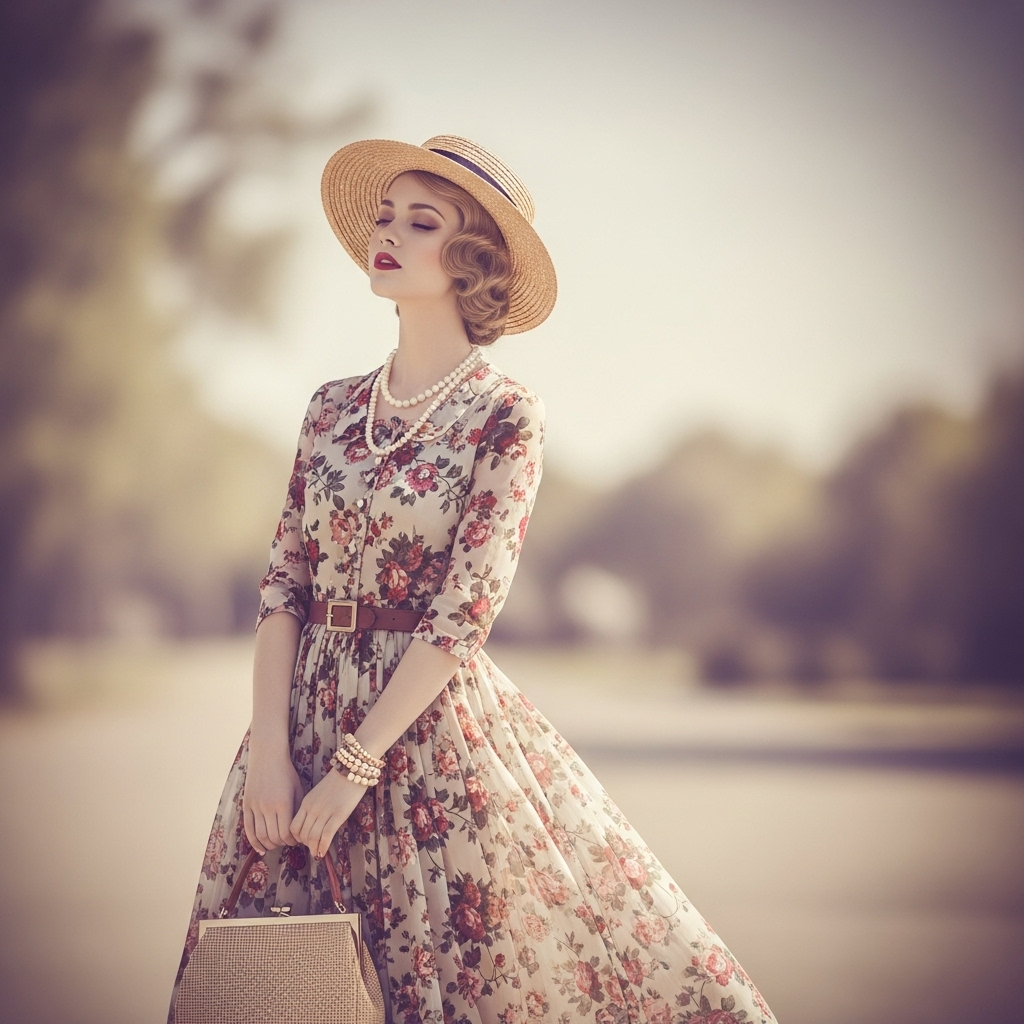
The Enduring Appeal of Vintage Fashion
Vintage fashion isn’t just a fleeting trend; it’s a testament to the enduring power of style, a nod to craftsmanship, and a sustainable choice in an era of fast fashion. More than simply wearing old clothes, embracing vintage is about curating a personal narrative, connecting with history, and making a conscious statement against disposable consumption. Its appeal lies in its uniqueness, its inherent quality, and the thrill of the hunt.
One of the primary draws of vintage fashion is its uniqueness. In a world saturated with mass-produced garments, vintage pieces offer a refreshing departure from the norm. It’s highly unlikely you’ll encounter someone else wearing the exact same dress from the 1950s or a perfectly preserved denim jacket from the 1970s. This individuality allows for a truly personalized style, one that speaks volumes about the wearer’s taste and appreciation for original design. Each item carries a story, a whisper of a past life, which adds an intangible charm that modern clothing often lacks. This narrative aspect is deeply appealing; you’re not just buying a garment, you’re inheriting a piece of history, a slice of a bygone era.
Beyond individuality, quality is a significant factor in the enduring appeal of vintage. Before the advent of widespread fast fashion and globalized manufacturing, garments were often made with greater attention to detail and using higher-quality materials. Fabrics were more durable, stitching was more robust, and construction techniques were often superior. A wool coat from the 1960s, for instance, might outlast several contemporary coats made with cheaper, synthetic blends. This inherent durability means that vintage items, despite their age, often stand the test of time, proving to be excellent long-term investments for a wardrobe. Many vintage pieces were designed to be repaired and cherished, not discarded after a few wears, a stark contrast to the disposable nature of much of today’s clothing. This emphasis on longevity aligns with a growing desire among consumers for products that are built to last and contribute to a more sustainable lifestyle.
The sustainability aspect of vintage fashion is increasingly relevant in today’s environmentally conscious world. The fashion industry is a major contributor to pollution, waste, and resource depletion. By choosing vintage, consumers are actively participating in a circular economy, extending the life cycle of existing garments, and reducing the demand for new production. This acts as a powerful antidote to the linear “take-make-dispose” model that dominates the modern fashion landscape. Shopping vintage lessens your carbon footprint, reduces textile waste in landfills, and conserves the water and energy resources that would be required to produce new clothing. It’s a tangible way to make a positive impact on the planet while still expressing your personal style.
The thrill of the hunt is another intoxicating element of vintage shopping. Unlike Browse a standard retail store, finding the perfect vintage piece often requires patience, persistence, and a keen eye. Whether it’s sifting through racks at a flea market, exploring a quirky antique shop, or meticulously scrolling through online vintage marketplaces, the discovery of a truly special item can be incredibly rewarding. This element of discovery transforms shopping from a mundane task into an exciting treasure hunt, adding an element of adventure and serendipity to the process. The anticipation of finding that hidden gem, whether it’s a perfectly tailored blazer, a unique piece of jewelry, or a classic handbag, is a significant part of the vintage experience.
Vintage fashion also offers versatility in styling. It’s not about dressing head-to-toe in a specific era’s attire unless that’s your preference. Instead, vintage pieces can be seamlessly integrated into a modern wardrobe, creating a dynamic and eclectic look. A vintage silk scarf can elevate a simple white t-shirt and jeans. A well-tailored vintage blazer can add sophistication to tailored trousers or a casual dress. Mixing and matching old and new creates a personal aesthetic that is both timeless and contemporary, demonstrating a sophisticated understanding of fashion history and individual expression. This blending of eras prevents a costume-like appearance and instead creates a unique, artful approach to dressing.
Beyond individual expression, vintage fashion plays a crucial role in preserving fashion history. Each garment is a tangible artifact, offering insights into the social, cultural, and economic conditions of its time. The silhouettes, fabrics, and construction methods reflect the prevailing trends, technological advancements, and societal norms of their era. For fashion enthusiasts and researchers, vintage clothing provides invaluable resources for understanding the evolution of style and design. By appreciating and wearing these pieces, we become custodians of this history, ensuring that the stories woven into the fabric continue to be told.
Finally, the nostalgia factor cannot be underestimated. For many, vintage clothing evokes a sense of sentimentality, a longing for a perceived simpler time, or a connection to personal memories or family history. Perhaps it reminds them of a grandparent’s style, a beloved film, or a specific cultural movement. This emotional resonance adds another layer of depth to the appeal of vintage, transforming clothing into something more than mere fabric and stitches; it becomes a vessel for memories and emotions. This emotional connection makes wearing vintage a deeply personal and often comforting experience.
In conclusion, the allure of vintage fashion is multifaceted. It’s a powerful statement of individuality, a commitment to quality, and a sustainable choice in a world grappling with environmental concerns. It offers the thrill of discovery, the versatility to integrate seamlessly into modern wardrobes, and a tangible connection to the rich tapestry of fashion history. More than just clothes, vintage fashion is a lifestyle choice that celebrates craftsmanship, champions uniqueness, and embraces a more conscious approach to consumption, ensuring its enduring appeal for generations to come.


Add comment